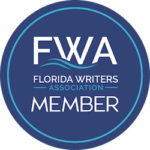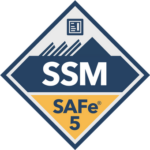Traditional vs. Self-Publishing (Indie) vs. Hybrid | A 101 Primer with Pros & Cons
Are you an aspiring author looking to publish a book? Or maybe your next opus magnus?
With the rise of options for self-publishing (aka Indie Publishing) and hybrid publishing, getting your book into the hands of eager readers has never been more accessible than now. But this complex landscape can be intimidating.
This post will help clarify the choices you have. In this primer, we will explore the three main paths to publishing:
- Traditional (or Trad);
- Self-Publishing (aka Indie); and
- Hybrid.
We’ll delve into the pros and cons of each to help you make a more informed decision about the publishing path for you and your book.
Traditional Publishing
In short, traditional publishing involves working with an agent and a publishing house. There are thousands and thousands of agents and a handful of publishers. (We’ll save the imprints of the Big 5 and small presses for another post, though they typically fall under the Trad umbrella.)
The publisher handles the entire production process, from editing and designing to marketing and distribution. Long before, Kindle, Amazon KDP, and others this was primarily the only path available for writers.
Here are the key things to know about and consider when thinking about a traditional publishing route:
- Gatekeepers: You will need a literary agent to be traditionally published. This gatekeeping process is used by publishers to ensure they’re getting quality submissions. Additionally, once you get “signed” by an agent there are more gatekeepers, namely editors who can get you into these coveted publishing houses.
- Production Support: With traditional publishing, you have a team of professionals behind you, including editors, cover designers, and marketers. They take care of all the graphic design and production elements, ensuring a polished final product.
- Marketing Responsibility: While the publishing house assists with marketing efforts, authors still need to have a marketing plan in place and will play a key role. The success of your book relies not only on the publisher’s efforts but also on your active participation in promotion. As a first-time author, don’t expect big efforts expended here by the publisher.
- Access to Editors: Traditional publishers provide access to professional editors who can help refine your manuscript and ensure its quality meets industry and genre standards.
- Advance and Royalties: If accepted by a publisher, you typically receive an advance against royalties, which may range from $5,000 to $15,000, maybe less. Also keep in mind, your book needs to earn enough sales to cover the advance before you receive any additional payments.
- Lack of Control: Traditional publishing often means relinquishing control over many aspects of your book, such as the cover design, title, even characters. Publishers may have specific requirements that you must adhere to, limiting your creative freedom.
- Time-Consuming Process: Traditional publishing is notorious for its lengthy and laborious processes. It can take years from acceptance of manuscript to the actual publication of your book. Plus, adding in the time to get an agent to represent you in the first place can be disheartening.
Self-Publishing (Indie)
Self-publishing offers authors more autonomy and control over the publishing process.
Here’s what you need to know about this growing Indie world:
- Faster and Easier: Self-publishing allows you to get your book out into the world quickly and easily.
- Control: You have complete control over the timeline and can publish your book at your own pace.
- Creative Freedom: As an indie author, you have the freedom to select your own book cover, title, and overall presentation. You are solely responsible for all creative decisions.
- No Rejection Letters: Unlike the traditional route, self-publishing eliminates the need to query agents and face rejection. You have the power to publish your work without external gatekeepers.
- Genre Fiction Advantage: Indie publishing is particularly beneficial for authors of genre fiction, as it allows writers to cater to niche markets and build dedicated fan bases. Coupling this with a strong marketing plan can yield good money. However, keep in mind you will need to wear many, many hats in the Indie space.
- Financial Considerations: While self-publishing may require more upfront investment, you retain a much higher percentage of profits compared to traditional publishing. However, bear in mind that the marketing and promotional efforts will largely fall on your shoulders. In essence, you are the publisher and writer. You are the CEO, COO, CFO, CMO, and all the roles reporting to them.
Hybrid Publishing:
Hybrid publishing combines elements of both traditional and self-publishing. It offers a middle ground for authors who seek professional support while retaining more control. However, there can be drawbacks.
Consider the following aspects of hybrid publishing:
- Supportive Publisher: Hybrid publishing provides authors with the support of a publishing house. They assist with editing, design, marketing, and distribution, like traditional publishing. But this approach is costly.
- Upfront Payment: Unlike traditional publishing, hybrid publishing typically requires authors to pay upfront for the publisher’s services. Each publisher may offer different packages, and you need to evaluate the costs and benefits carefully. Note: There may be hybrid presses who don’t charge a lot (or ask for share of production costs) but keep in mind in this space, you get what you pay for.
- Distribution and Royalties: Hybrid publishers have established distribution connections and can provide wider exposure for your book. Additionally, authors typically receive a higher percentage of royalties compared to traditional publishing deals.
- Beware of Scams: While hybrid publishing can be a legitimate option, it’s crucial to research and be cautious of potential scams or vanity presses. Ensure you thoroughly vet the reputation and credibility of the publisher before committing.
Summary
Choosing the right publishing path for your book is a crucial decision that impacts your creative control, financial investment, and potential success.
Consider your goals, resources, and preferences when deciding between traditional publishing, self-publishing, or hybrid publishing.
Remember, there is no one-size-fits-all approach, and what works for one author may not work for another. With careful consideration and research, you can find the publishing path that aligns with your vision and helps you share your story with the world. Good luck on your publishing journey!










Leave a Reply